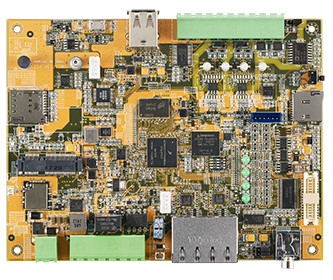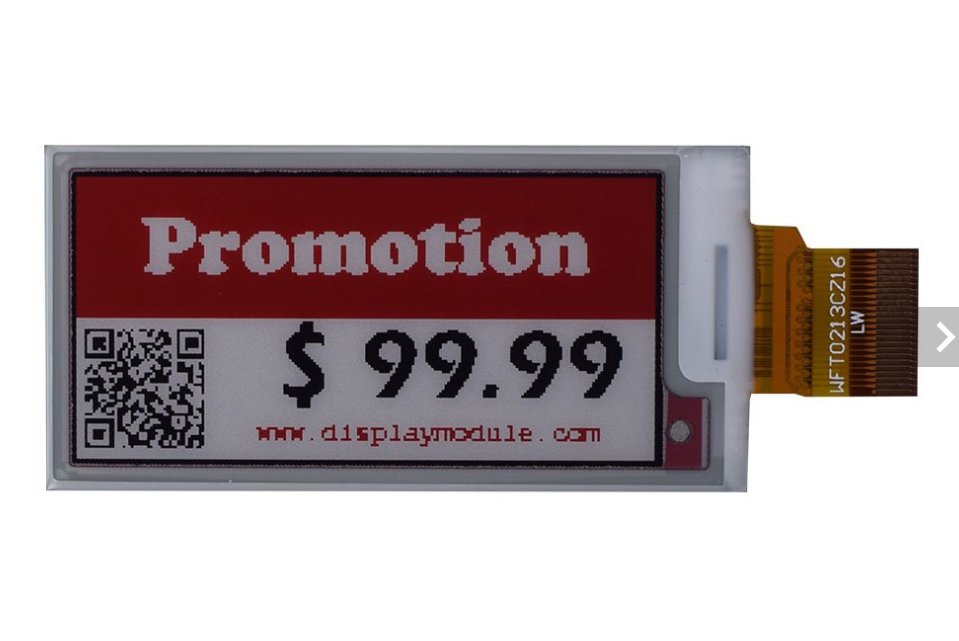With remarkable low power consumption features and little need for programming, the SparkFun NanoBeacon Board – IN100 and SparkFun NanoBeacon Lite Board – IN100 provide a 2.4 GHz wireless low energy beacon breakout. The IN100 NanoBeaco from InPlay is displayed on the board. The NanoBeacon Tool enables software-free module configuration, eliminating the need for complex programming to set up advertising settings for sending and receiving packets.![]()
SparkFun NanoBeacon Lite Board
Although the design of both variants of this board is the same, there are a few small variations between them. This breakout’s Lite version, which is designed for prototyping has a reset button and power LED, is available. The reset button and power LED are not populated in the standard version, which also has male headers soldered to the board’s through-hole pins. This is because it is intended for rapid implementation and requires little assembly and customization.
IN100 NanoBeacon
An extremely low-power Bluetooth beacon module compatible with widespread 2.4 GHz protocols is the NanoBeacon IN100 SoC from InPlay.
![]()
The module can also be set up to function as a device that complies with Google Eddystone and Apple iBeacon standards. Go to the datasheet of the module for a detailed overview of the IN100.
The IN100 has the following optional peripherals:
- Eight GPIO pins and one UART (four with multiple function options, including I2C and ADC) are present.
- An 11-bit ADC on GPIOs that measures chip temperature and Vcc voltage.
- For managing the power to peripheral devices, two load switches are provided.
- One-wire sensors are compatible with the pulse count interface.
These settings enable users to wirelessly broadcast data from a variety of peripheral devices to other devices after connecting them to the NanoBeacon.
Specification:
- Its Bluetooth low energy 5.3 is compatible with the enhanced privacy mode.
- Beacon Modes: Private, works with Bluetooth SIG, works with iBeacon/Eddystone/Altbeacon.
- It has 4KB SRAM, a manufacturer ID, and advertising payload storage. It also has 4KB eFuse memory.
- On one side is a UART interface that connects to a 3.3V Serial Basic for USB communication and setting up the IN100 with the Config Tool. On the other side, four of the IN100’s GPIO pins (4–7) and the two I/O power switches are exposed (SW0 and SW1).
![]()
- QWIC Connector: I/O pins 3 and 4 are used for SDA and SCL on the Qwiic connector on the board. In order to use this connector, I2C must be turned on for the IN100 in the Config Tool.
![]()
- There is an RF radio with a 2.4GHz RF transmitter, support for the MedRadio band, and programmable TX output power of up to +5dBm.
- System Power Consumption as Sub-uW power consumption for multi-year operation on a small battery and Sleep mode 650nA with 32kHz RC ON.
- Security and privacy based on AES-128 authentication and encryption
- NanoBeacon Boards can be powered by either a coin cell battery or the Vcc pin on the UART header.
![]()
- The Reset button on the Lite version lets you quickly reset the board while prototyping. The Power LED is the only LED on this board. It shows that the board has power.
![]()
- Solder Jumpers: There are three solder jumpers on the Beacon Breakout. They are labelled PWR, I2C, and BUS.
![]()
- The operating temperature range is from -40°C to +85°C for industrial and from -40°C to +125°C for full-range industrial.
- The NanoBeacon boards meet the Qwiic standard of 1″ x 1″ (25.4 mm x 25.4 mm) and have two holes for mounting that fit a 4-40 screw.
![]()
Applications
Standalone retail beacons, wireless sensors, asset tracking, beacon tag for RTLS (Real Time Location System), active RFID, low-power alarm system, wireless ID tag for healthcare, industrial use of wireless technology, and fitness and wellness are the common applications.
![]()
NanoBeacon Board assembled and connected to a Serial Basic.
You can find instructions in a tutorial on the Sparkfun Learn website, and the video below shows how the config tool works.
As it says in the specs, the NanoBeacon board doesn’t need to be programmed. To configure and program the IN100 in Windows, Linux, or macOS, all you have to do is use InPlay’s Nanobeacon Config Tool GUI. In a typical setup, the Sparkfun NanoBeacon board would be connected to a sensor board, like the Sparkfun BMA400 Qwiic module, and a serial board would connect the board to the host so that the config tool could be used to set up the board.
You can also download the NanoBeacon BLE Scanner app from Google Play or the Apple App Store. The company’s store sells the SparkFun NanoBeacon Board – IN100 and the SparkFun NanoBeacon Lite Board – IN100 for $5.95 each.

















